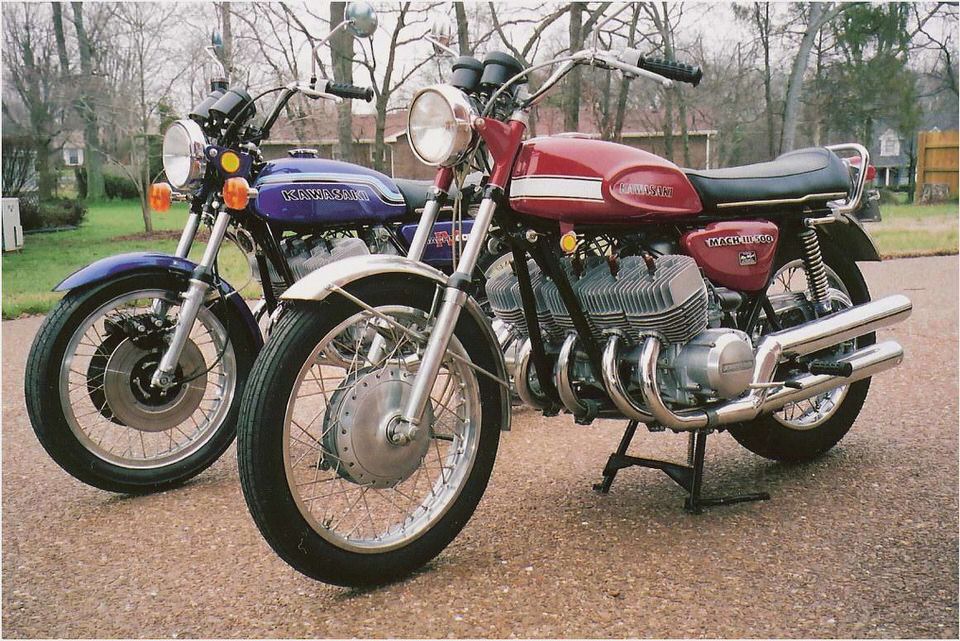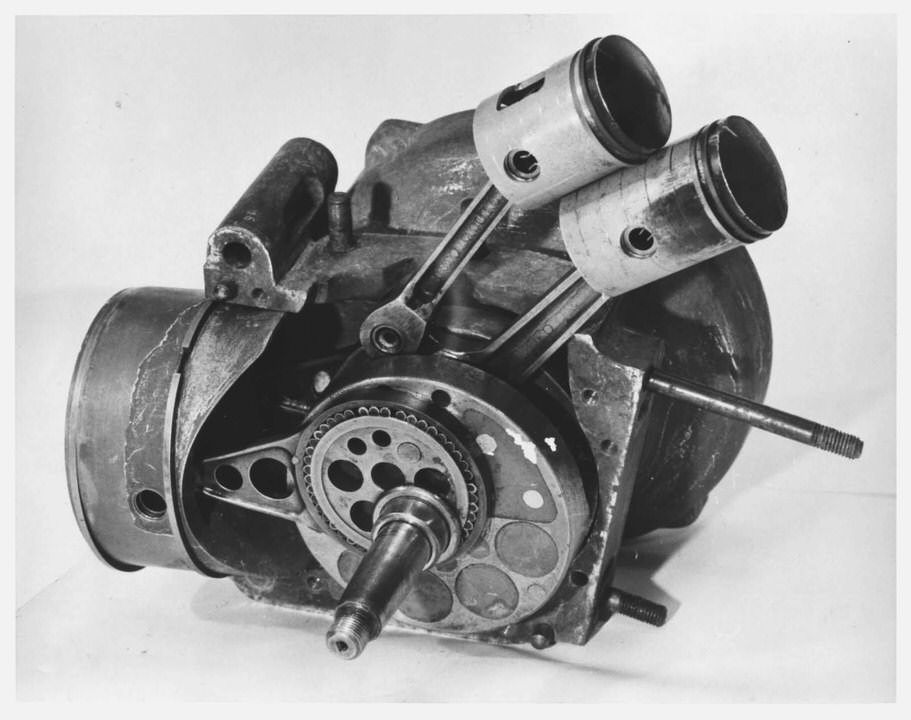
Kawasaki W series
The Kawasaki W series is a line of motorcycles made by Kawasaki since 1965 that shares some characteristics of classic British vertical-twin standard motorcycles. Sold as a 1966 model in the North American market, the first Kawasaki W1 had the largest engine displacement of any model manufactured in Japan at the time. Kawasaki continues to build models of the W brand similar to the W1.
Kawasaki W series
In 1965 the K2 was enlarged to 624 cc to become the Meguro X-650 prototype, which was displayed at the 1965 Tokyo Motor Show. The X-650 then became in turn the prototype for the Kawasaki W1.For the new Kawasaki big bike, the traditional look of Meguro motorcycles was replaced with a sleeker fuel tank, sportier mudguards (fenders) and other details intended to appeal to export markets, especially North America. The Society of Automotive Engineers of Japan (Japanese), includes the 1966 Kawasaki 650-W1 as one of their 240 Landmarks of Japanese Automotive Technology .
Kawasaki’s W1 has been described as a Japanese copy of the post-war, pre-unit construction BSA A10 650cc vertical-twin (aka Rocket) but this turns out to be more apparent than real. The A10 engine was an under square design with a 73 mm (2.9 in) bore and an 84 mm (3.3 in) stroke, whereas the W1 inherited its 72.6 mm (2.86 in) stroke from the K2 engine, adding displacement by increasing the size of its bore to 74 mm (2.9 in).
This slightly oversquare (i.e. short-stroke) design favours higher engine speeds, while reducing stresses on the crankshaft. In addition, the new W1 had a one-piece pressed crankshaft assembly with ball bearings and one-piece connecting rods with needle bearings, significant improvements over the earlier BSA (and Meguro) engines that used plain insert type bearings and two-piece connecting rods.
Even though the BSA and Kawasaki 650cc engines were mechanically different from each other, visually they gave very much the same impression.
Likewise, in the design of its twin-loop frame, as well as its overall styling, the W1 motorcycle was clearly influenced by classic British road bikes, including shifting with the right foot and braking with the left. From 1966 to 1968 W1 engines were built with a single 31 mm Mikuni carburetor (this is only feasable in a straight-twin with a 360° crankshaft angle). Starting in 1968, the W1SS with two 28 mm Mikuni carbs took the place of the original W1.
Also in 1968, the W2 (aka Commander ) emerged. The W2SS was a restyled W1SS with slightly more horsepower, and the W2TT was a high-pipe version with twin mufflers on the left side. Due to flat sales in North America the W2TT was discontinued in 1969, the W2SS ended in 1970, and finally in 1971 Kawasaki axed the W1SS.
The 650 remained popular in Japan, and although some were exported to Europe in the 70s, subsequent models were produced primarily for the domestic market. The penultimate model in the W series was the W1SA with stylistic changes, but most importantly with the gearshift lever on the left side and the rear brake pedal on the right side, which is the standard configuration for Japanese motorcycles.
The final version was the 1973 W3 model (aka RS650 ) with upgraded suspension as well as twin disc brakes in front. W series production ceased in 1974.
Descendants: Kawasaki W brand
Today’s fascination with retro style motorcycles began in 1989 with the Honda GB500 and the Kawasaki Zephyr, both first produced for sale in Japan as 400cc models.These retro-bikes evoked nostalgia for classic motorcycles from decades earlier. The Zephyr was made using the Z series inline-fours from the 1970s as a template. By the late 1990s Kawasaki was designing successors to the Zephyr series, based on even older generations of motorcycles with twin-cylinder engines.
In 1999 Kawasaki released new retro-bikes, the V-twin Drifter and the vertical-twin W650. Unlike the 1960s W series, the 1999-2007 W650 had an up-to-date engine design very different from its ancestors, while holding on to the vintage British motorcycle look. The 2011-2013 W800 carries on with the the W brand, and expands the range to include Café racer models.

- Klr 250 for Sale Owners Guide Books
- Offroad 2009: the new Kawasaki KX-F 450 and 250
- Test Kawasaki KX 250-F Motors TV
- Kawasaki Zephyr 550
- 2010 Kawasaki ER-6n review Motorcycle Trader New Zealand
